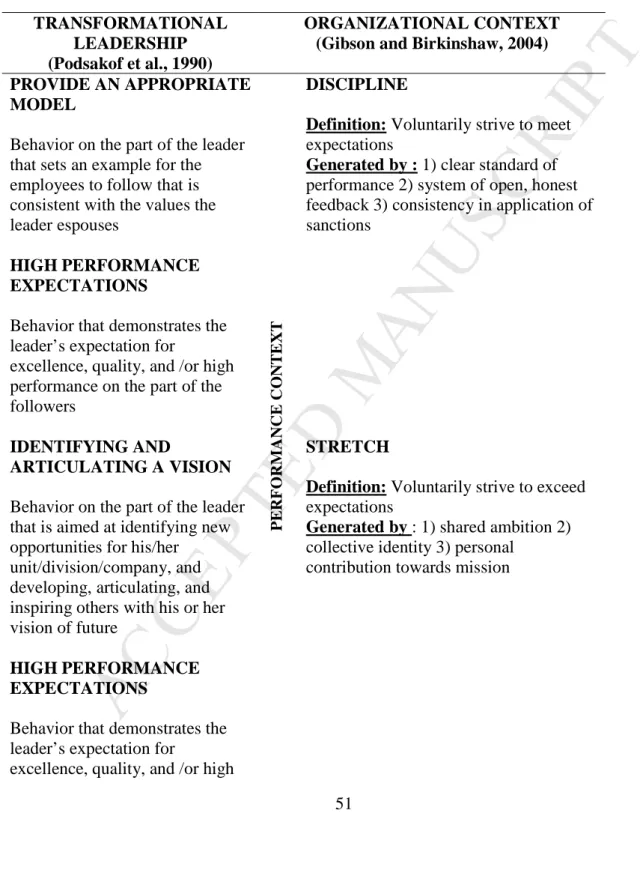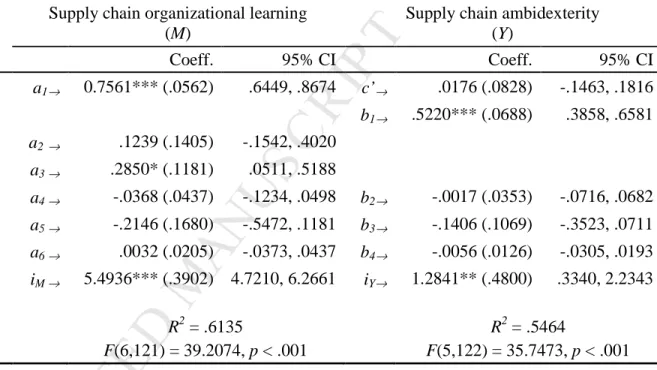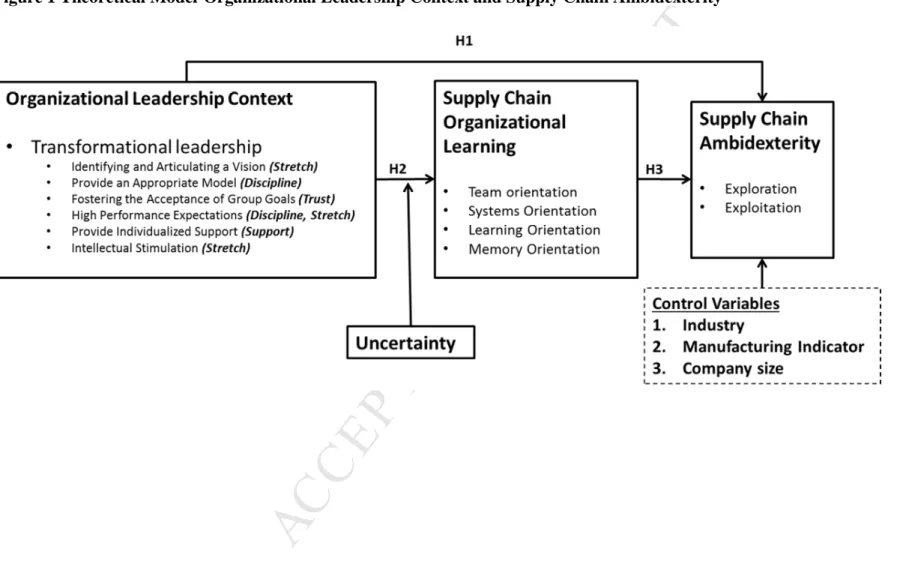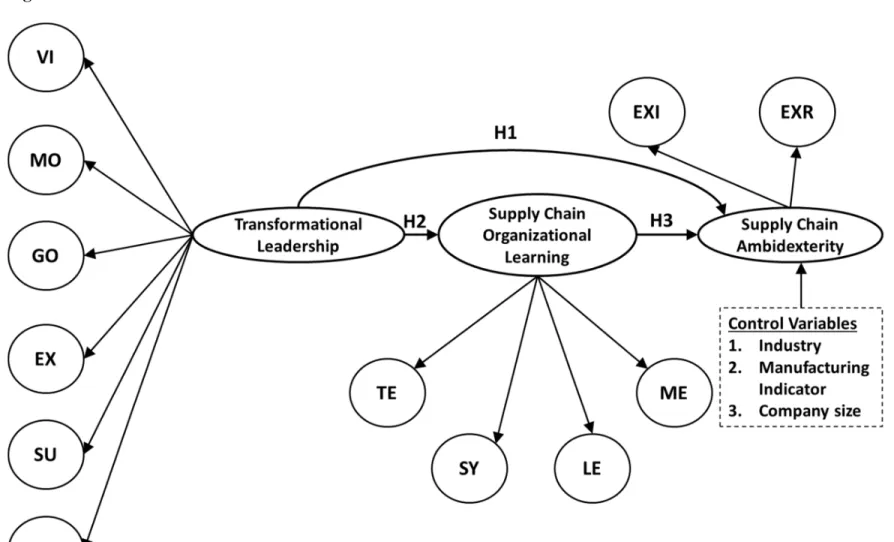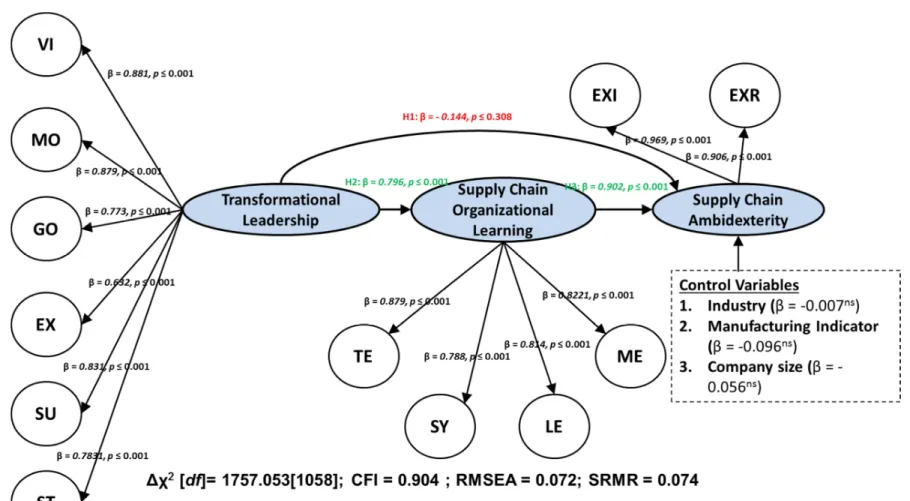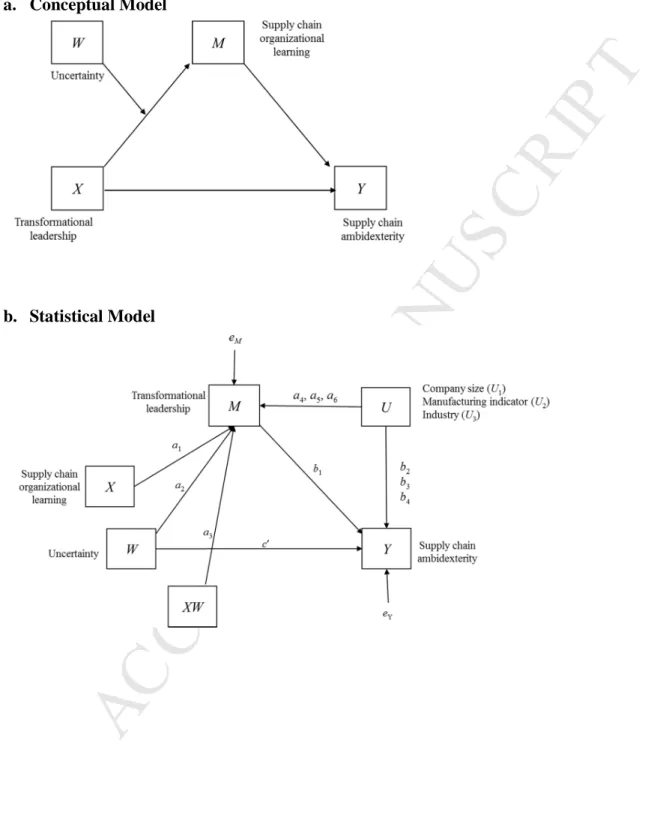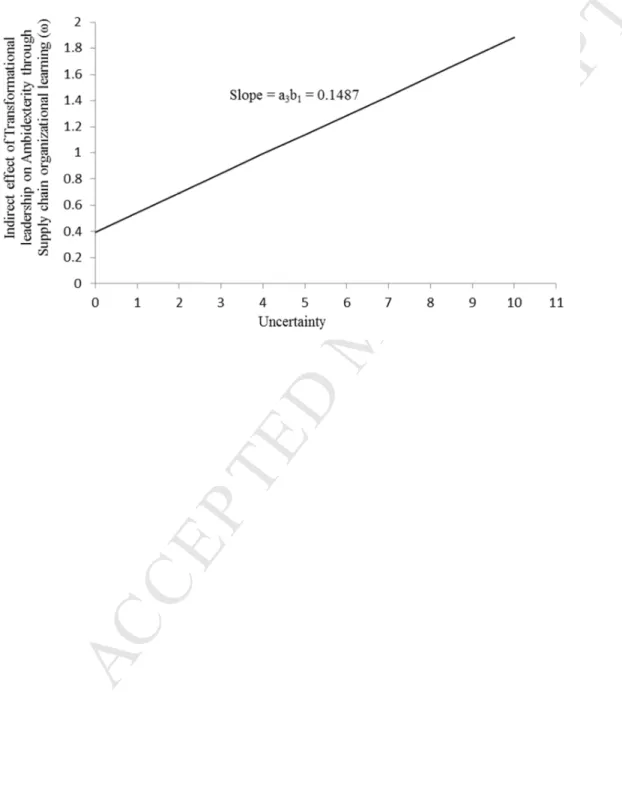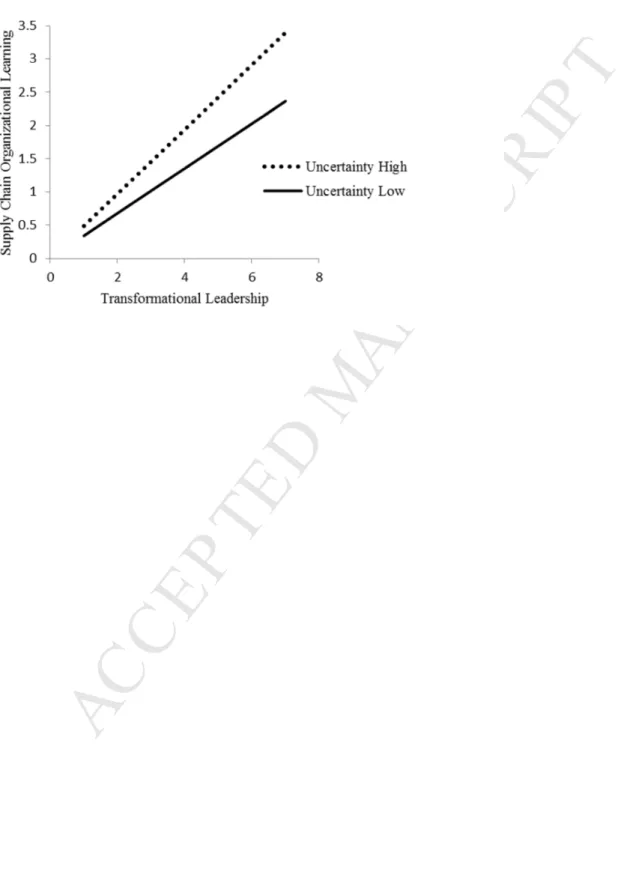Transformational leadership and supply chain reciprocity: The mediating role of supply chain organizational learning and the moderating role of uncertainty. In addition, uncertainty in the work environment positively moderates the relationship between transformational leadership and supply chain learning.
How Does Transformational Leadership Create Social Context: Support and Trust?
At the group level, transformational leaders encourage cooperation between team members and develop team attitudes and motivation in favor of a common goal (Podsakoff and MacKenzie, 1994).
How Do Performance and Social Contexts Create Supply Chain Ambidexterity?
Regardless of the size of an organization, transformational leaders play a critical role in creating the performance and social contexts for supply chain ambidexterity within. By fostering these contexts, top management's transformational leadership creates the conditions for supply chain ambidexterity.
Dimensions of supply chain learning
Transformational leadership, organizational context, and supply chain organizational learning
Promoting acceptance of group goals is another dimension of transformational leadership that encourages collaboration among employees (Podsakoff et al., 1990), supporting team orientation, an important aspect of learning in the supply chain. Overall, the different dimensions of transformational leadership create the right performance and social context for developing the supply chain.
Supply chain organizational learning and supply chain ambidexterity
In the supply chain organizational learning literature, team orientation emphasizes that supply chain partners maintain a cooperative relationship, system orientation and memory orientation emphasize their willingness to integrate and share learned knowledge across all supply chain partners, and learning orientation emphasizes partners' willingness to continuously explore for the long-term prosperity of a firm. The inter-organizational adjustment in the supply chain relationship between the buyers and suppliers helps to reduce costs, increase revenue and create dependency.
Mediating Role of Supply Chain Organizational Learning
While H2 suggests a direct relationship between transformational leadership and supply chain ambidexterity, our discussion above also points to the relationship being partially mediated by supply chain learning. H4: Supply chain organizational learning mediates the relationship between top management transformational leadership and supply chain ambiguity.
The Moderating Role of Uncertainty
Nemanich and Vera (2009) attempted to address a similar issue in the context of an acquisition, but did not find support for a learning culture mediating the relationship between transformational leadership and the twin goals of exploration and exploitation. Furthermore, their conceptualization of learning culture focused on climates of interpersonal risk taking and decision participation rather than the specific learning processes that have been established to be effective in the supply chain context (e.g. Hult, 1998). As a result, it is still not clear from previous studies what role transformational leadership and learning play in organizational ambidexterity, or supply chain ambidexterity, specifically.
Building on our arguments above, we suggest that fostering a context for learning is a key mechanism through which transformational leaders influence supply chain ambidexterity. Evidence suggests that top management's charismatic leadership, a component of transformational leadership, is only related to performance under greater uncertainty (Waldman et al., 2001). Transformational leadership has also been shown to increase employees' innovative behavior (Pieterse et al., 2010), and in uncertain conditions, transformational leaders can guide followers to meet the needs for changed responses and increased effort (de Hoogh et al., 2004).
On the other hand, the degree of uncertainty in the make-to-stock environment is low because the operating systems follow the internal forecast of demand rather than actual customer demand. In high uncertainty environments, top management's transformational leadership is more likely to be related to the learning processes that enable ambidexterity in the supply chain.
METHOD 1 Sample and Procedures
Measures
A 7-point Likert scale is used to measure transformational leadership for all the 23 items of the scale (α = .91). A 7-point Likert scale measured all four dimensions of supply chain organizational learning, namely team orientation, system orientation, learning orientation, and memory orientation. Respondents responded to survey items based on their views on their business unit's supply chain practices over the past twelve months.
We used the production environment – make-to-stock versus make-to-order – to deal with the uncertainty in the operational environment. Made-to-order environments in which the products are built to customer specifications are subject to a high degree of uncertainty because the control systems must adapt to highly variable customer demand (Hayes and Wheelwright, 1979). In the make-to-stock environment, uncertainty is low because the operating systems follow internal demand forecasts rather than actual customer demand.
Therefore, we conceptualized uncertainty as a dichotomous variable with a low level of uncertainty corresponding to the make-to-stock environment and a high level of uncertainty corresponding to the make-to-order environment. Previous research has shown that learning in the supply chain organization varies significantly between industries (Dutton and Thomas, 1984).
RESULTS
Test of hypotheses
Hypothesis 3, which predicts that supply chain organizational learning positively affects supply chain reciprocity, was supported (β = 0.902, p ≤ 0.001). The indirect effect of transformational leadership on supply chain reciprocity through supply chain organizational learning was also significant (β = 0.718, p ≤ 0.001). Therefore, Hypothesis 4, which states that organizational learning in the supply chain mediates the relationship between top management's transformational leadership and the supply chain.
Moreover, the results also show that the moderation of the transformational management on the supply chain. The indirect effect of transformational leadership on supply chain ambidexterity through supply chain organizational learning is a product of the conditional effect of transformational leadership on organizational learning from Equation 1 and the effect of supply chain. The graph shows that the indirect effect of transformational leadership on ambidexterity through supply chain organizational learning increases with the increase in uncertainty, as the slope of the line is positive.
We also used simple slopes to estimate the conditional indirect effect of transformational leadership on supply chain organizational learning. The simple slope of the relationship of transformational leadership with supply chain organizational learning under low uncertainty was low CI = 0.2248 to 0.4749).
DISCUSSION
Contribution to Theory
The influence of transformational leadership on ambidexterity, however, is not significant in the presence of supply chain organizational learning, which is a mediating variable (a CI = -0.1463 to 0.1816). This leads us to conclude that moderated supply chain learning fully mediates the relationship between transformational leadership and ambidexterity. These dimensions of supply chain organizational learning can be seen as tangible prosocial outcomes, where supply chain partners can demonstrate how a vision envisioned by their transformational leaders has a.
The results of our study strengthen the concept that transformational leadership improves the behavioral outcomes of job performance in terms of improved supply chain organizational learning and firms' ability to pursue both exploration and exploitation strategy. Our evaluation of the moderating effect of uncertainty shows that the relationship between transformational leadership and supply chain organizational learning strengthens with an increase in uncertainty. This result suggests that uncertainty acts as a boundary condition for supply chain organizational learning, mediating the influence of transformational leadership on supply chain ambidexterity.
Finally, because leaders who are transformational in nature may not be involved in transactional activities, we examined the independent influence of transformational leadership on supply chain organizational learning. The results supported our argument that managers can achieve the dual goal of exploration and exploitation over a one-year period by developing organizational learning capabilities in the supply chain.
Contribution to Practice
However, we are not sure whether or not the exploration and exploitation practices that took place simultaneously were based on the same products, services or concepts. Organizations could have exploited their current resources or capabilities, but at the same time. The results also suggest that leaders should first focus on improving the development of four dimensions of organizational learning in the supply chain: team orientation, system orientation, learning orientation, and memory orientation (Hult, 1998).
Co-founder and former Uber CEO Travis Kalanick's was committed to achieving this goal by encouraging partners in the value chain such as researchers, automakers and other suppliers to work together. These systems establish a foundation where Uber is able to keep track of unsuccessful attempts and communicate lessons learned to all partners in a value chain. In summary, the partners in Uber's value chain emphasize continuous learning, collaboration, joint contributions and knowledge sharing.
Limitations and Future Research
Therefore, treating organizational reciprocity as a single construct fails to account for differences in the amount of exploitation and exploration variance explained by supply chain organizational learning. Second, although there are four dimensions of supply chain organizational learning, we treated them as one construct. Supportive leader behavior may or may not affect all of these learning dimensions or may not affect some dimensions of the supply chain.
Therefore, we recommend that future researchers examine the differential impact of leadership support on each dimension of supply chain organizational learning. A single response that assesses management support and supply chain organizational learning may prompt respondents to respond in a socially desirable manner. Similarly, since managers appropriately identify the level of organizational learning in the supply chain (the collective learning of all employees), it may be more appropriate to assess organizational learning in the supply chain from the perspective of the manager.
We tried to determine this bias by comparing our sample to another larger supply chain sample. Another potential area for future research is the use of the four dimensions of organizational learning to study the different effects of learning on ambidexterity.
CONCLUSION
Effects of supply chain integration on customer satisfaction and financial performance: an organizational lesson. Please indicate your level of agreement with the following statements about the focus on teamwork in your supply chain. We are committed to sharing our vision of supply chain processes across all levels, functions and divisions.
Please indicate your level of agreement with the following statements related to focusing on the interconnectedness and interdependence of the various activities in your supply chain. We have a good sense of the connection between all parts of the supply chain's processes. Please indicate your level of agreement with the following statements about the emphasis on learning in your supply chain.
Please indicate the extent to which you agree with the following statements regarding communication and knowledge distribution in your supply chain. Please indicate the extent to which you agree with these statements about your business unit's supply chain practices over the past 12 months. To remain competitive, our supply chain managers focus on improving our existing technologies.
Transformational leadership and supply chain ambidexterity: A moderated mediation model of supply chain uncertainty and organizational learning.
